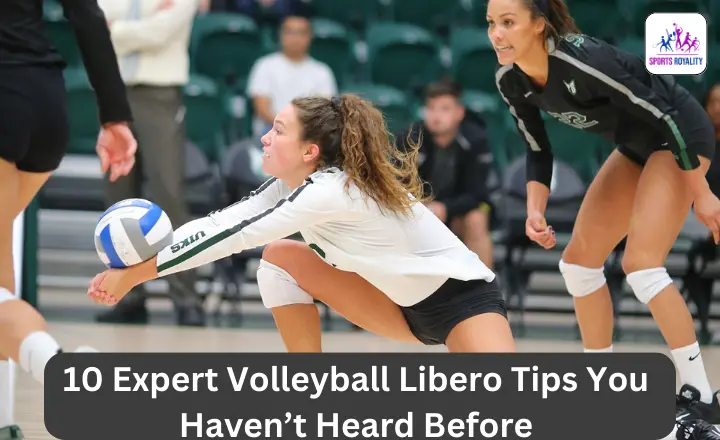As the unsung hero of the volleyball team, the libero plays a vital role in defense and passing. With lightning-fast reflexes and impeccable reading skills, this specialized position requires unique techniques to excel on the court.
While many articles claim to offer expert Volleyball Libero Tips, we’ve dug deep to bring you 10 tips that you probably haven’t heard before. From unconventional training methods to mental strategies that give you an edge, get ready to take your libero game to a new level with these insider secrets.
Let’s go!
Shift Your Mindset: From Mistakes To Opportunities
Many liberos tend to have a scarcity mindset, constantly fearing making mistakes on the court. This mindset can hinder their performance and prevent them from reaching their full potential.
According to Team USA libero Dustin Watten, it’s time for liberos to shift their mindset from mistakes to opportunities. Instead of viewing each ball as a potential error waiting to happen, Watten suggests seeing every opportunity as a chance to make a fantastic dig.
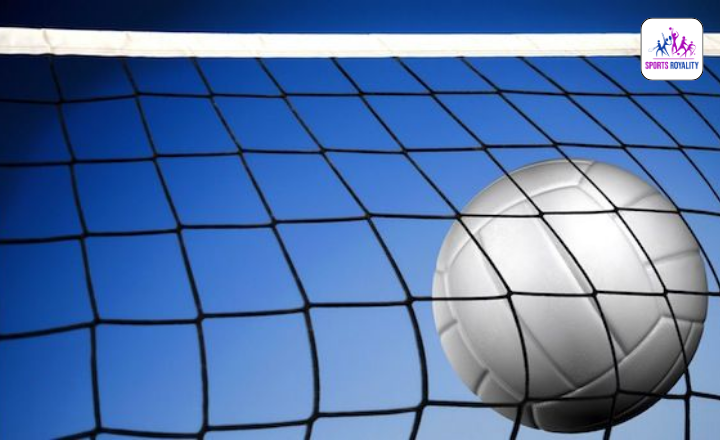
By reframing the situation this way, liberos can confidently approach each play and embrace the challenge. Watten’s perspective highlights the importance of flipping our mindset towards mistakes. Rather than dwelling on failures or perceived errors, we should focus on the opportunities they present for growth and improvement.
By embracing mistakes as chances to learn and develop, liberos can unlock their true potential on the volleyball court and become an invaluable asset to their team.
Practice Profiling Hitter Tendencies & Adjust Frequently:
It also demands a keen understanding of the opposing team’s hitters. By practicing profiling hitter tendencies, liberos can gain valuable insights to give their team a competitive edge. Taking mental notes about each opponent’s preferred shots, hitting angles and tendencies when facing different situations is crucial for success.
Adjusting defensive strategies based on these observations allows liberos to anticipate opponents’ moves and position themselves accordingly. For example, if one hitter consistently favors cross-court shots, the libero can shift their positioning slightly to cover that area more effectively.
Liberos become invaluable assets to their teams by recognizing patterns in the opponent’s playstyle and exploiting weaknesses or tells in their approach. The best liberos go beyond memorizing hitter tendencies during games. They strive to know every detail about their opponents by the end of each match.
Building this level of knowledge takes time and dedication but pays off immensely when anticipating plays becomes almost instinctual. By staying vigilant throughout matches and continually adjusting their strategies based on what they observe from hitters, liberos elevate not only their own game but also contribute significantly to the overall success of their team.
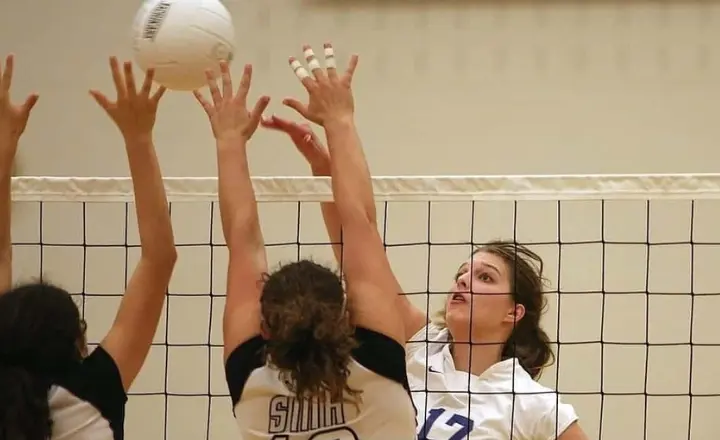
Improve Ankle, Knee, Hip, & Lower Back Mobility:
Improving ankle, knee, hip, and lower back mobility can take your libero skills to the next level.
Sufficient mobility in these areas will enhance your performance on the court and help prevent injuries. Many players neglect their ankles and focus solely on calf stretches before a match or practice.
Incorporating ankle mobility exercises into your regular training routine can significantly improve agility and stability while moving laterally or making quick changes in direction.
Working on knee flexibility and strength is vital for executing powerful dives to save those difficult low balls. Engaging in exercises that target the quadriceps and hamstrings improves the range of motion and helps protect these joints from overuse injuries commonly seen in liberos.
Hip mobility is crucial in both offensive and defensive movements during gameplay. Incorporating hip rotations or lunges into your training regimen can increase flexibility while optimizing balance and control when digging or setting the ball.
Don’t forget about your lower back. As a libero constantly diving for saves close to the ground or bending forward during serves, receive position adjustments are essential for maintaining good posture throughout the game while reducing strain on this area.
Complete Commitment When Passing:
It means getting your body behind the ball and giving it everything possible to ensure a clean and precise pass.
It’s important to understand that passing requires total concentration and focus. As a libero, you are your team’s first line of defense, so any mistakes in your passes can be detrimental. By committing fully to each pass, you are more likely to achieve better control over the direction and speed of the ball.
Complete commitment involves using your whole body during the pass. Many players make the mistake of relying solely on their arms and shoulders to get the job done. Utilizing your legs and core muscles can significantly enhance your overall passing ability.
By engaging these muscle groups and generating power from them, you’ll have more control over where the ball goes after it leaves your platform.
Model Your Approach After Jenia Grebennikov:
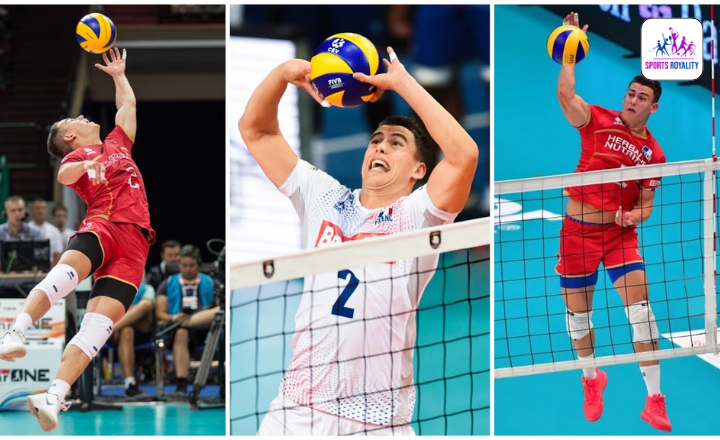
A volleyball libero is to model your approach after the best in the world, Jenia Grebennikov. While most liberos position themselves closer to the back line, Grebennikov stands out by positioning himself closer to the attack line. This strategic move allows him to dig more effectively and create better opportunities for his team.
Another overlooked aspect of Grebennikov’s game is his unique technique when digging. Unlike many other liberos who rely solely on their hands, he incorporates his body into the dig, utilizing his arms, legs, and torso. This technique gives him added power and precision when defending against powerful attacks.
By daring to do things differently, Grebennikov has become a game-changer in volleyball libero play. So, if you aspire to be the best libero you can be, take a page from his book and don’t be afraid to break away from convention. Explore new positioning strategies and experiment with techniques until you find what works best.
Be Aggressive & Loud When Defending:
Players like Jenia Grebennikov are known for their vocal presence on the court, especially during defense. Being loud and constantly communicating lets their teammates know their intentions and plans, allowing them to shift focus and transition into offense seamlessly.
This communication level helps the team be more efficient and prevents them from being late on offense. Many players may overlook the importance of being aggressive in defense as a libero. Liberos can have a much bigger impact on the game by actively seeking out opportunities to make plays instead of passively waiting for balls to come their way.
Grebennikov’s aggressiveness in diving after balls that seem impossible to reach has paid off countless times for his team. It saves points and energizes the entire team, boosting morale and confidence.
Being vocal during defense is crucial for effective teamwork. By calling out plays and alerting teammates about potential threats or holes in the defense, liberos play a pivotal role in keeping everyone organized and focused.
The louder and more assertive they are with their communications, the better their chances of preventing miscommunication errors that can cost valuable points.
Become Better At Setting Than Your Setter:
The setting may not be your primary role on the court, but there’s no harm in becoming better at it than your setter. Mastering the art of setting can give you an edge and make you an invaluable asset to your team. One essential tip most liberos overlook is learning to read the game from a different perspective.
Instead of focusing solely on defense and passing, take the time to observe how the opposing team moves and anticipate where the ball is likely to go. They will allow you to position yourself strategically and be ready for any play, giving you more opportunities to set up your hitters effectively.
Another game-changing tip is improving your hand-eye coordination. Setting requires precision and accuracy, so honing this skill will significantly enhance your ability to deliver consistent and accurate sets. Practice drills such as juggling multiple balls or passing against a wall can help improve your coordination while under pressure.
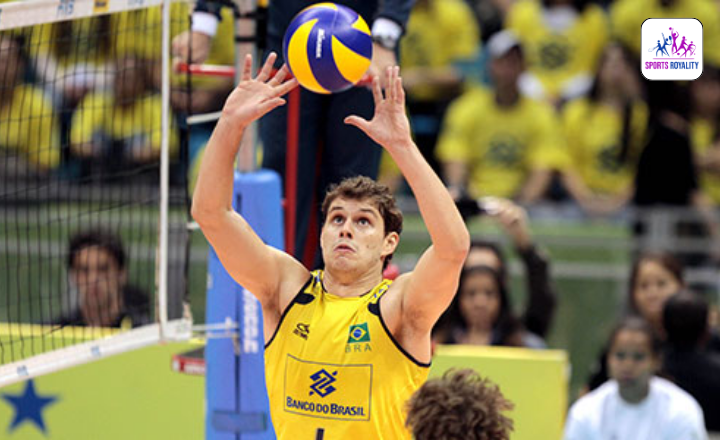
Don’t be afraid to experiment with different techniques when setting. Try using different parts of your hands or adjusting the speed of the set based on specific situations to keep opponents guessing and gaining the upper hand on them.
By focusing on these often overlooked aspects of being a libero, reading the game differently, improving hand-eye coordination, and experimenting with new techniques, you’ll elevate your playing ability beyond what’s expected from a traditional defensive specialist position.
Hight of Liberos
The height of liberos in volleyball has been a topic of intrigue and debate among fans and players alike. While traditional positions in volleyball often require taller athletes, the libero position breaks this mould by allowing shorter players to excel on the court.
It’s fascinating to note that there is no specific height requirement for liberos, unlike other positions such as middle blockers or outside hitters. It opens up opportunities for athletes who may not fit the typical height expectations of volleyball to showcase their skills and contribute significantly to the team’s success.
One fresh perspective on the height of liberos in volleyball is that it emphasizes agility, speed, and defensive prowess over sheer physical stature. The shorter size of liberos enables them to cover ground quickly, anticipate plays effectively, and excel at rapid defensive movements.
It highlights how the role of a libero transcends physical attributes and emphasizes strategic positioning and quick reflexes as essential qualities for success in this position.
Considering the evolving nature of modern volleyball tactics, the versatility offered by shorter liberos cannot be understated. Their lower center of gravity allows them to excel at digging soft balls and executing precise passes efficiently.
This adaptability challenges traditional notions about player height requirements while underscoring the importance of diverse skill sets on a successful volleyball team.
Practice Reading Spikers With Game Footage:
While most players focus on refining their passing and defensive techniques, few focus on developing their reading skills. Studying game footage lets you gain valuable insights into opposing spikers’ tendencies and body language.
Look for subtle cues such as the angle of their arm swing, where they make contact with the ball, or their follow-through after the hit. These details can give you split-second advantages when predicting where the ball is going.
Another crucial aspect of reading spikers is understanding the context of each play. Analyze how situations affect a hitter’s choices, such as pressure or facing a specific opponent’s block formation. By recognizing patterns in individual hitters and team strategies, you can position yourself more effectively on defense and react quicker to block or dig an attack.
Regularly reviewing game footage enhances your technical skills and sharpens your situational awareness during matches as you become more attuned to opponents’ tendencies.
While honing your passing and defensive abilities is essential for excelling as a volleyball libero, don’t underestimate the power of learning to read spikers effectively. Delve into game footage analytically and search for subtle hints that can give away an opponent’s intentions.
Understanding individual players’ habits and team strategies will help improve your overall performance on defense by positioning yourself strategically and anticipating attacks before they happen.
Dig Way More Volleyballs Than Anyone Else:
Utilize your peripheral vision: One often overlooked aspect of successful digging is using peripheral vision. As a libero, you must constantly know the entire court and anticipate where the ball will go.
Train yourself to track the movement of players and read their body language to get a head start on determining where the attack is coming from. By honing your peripheral vision skills, you’ll be able to react faster, move efficiently, and dig more balls than anyone else on the court.
Master quick reflexes through solo drills: Volleyball liberos need lightning-fast reflexes to dig hard-hitting spikes successfully. Incorporate solo drills into your training regimen, focusing on improving reaction time. Use a partner or a wall to practice tossing balls at different angles and heights while mimicking game situations.
Constantly challenge yourself by increasing speed, accuracy, and variability in these drills so that when it comes time for a real match, your reflexes will be finely tuned, allowing you to dig way more volleyballs than anyone else can.
Work on core stability: Maintaining balance while in motion is crucial for any volleyball player but holds particular importance for liberos, who are often required to make sudden changes in direction without sacrificing control over their movements. Strengthening your core muscles is vital in maintaining this stability during gameplay.
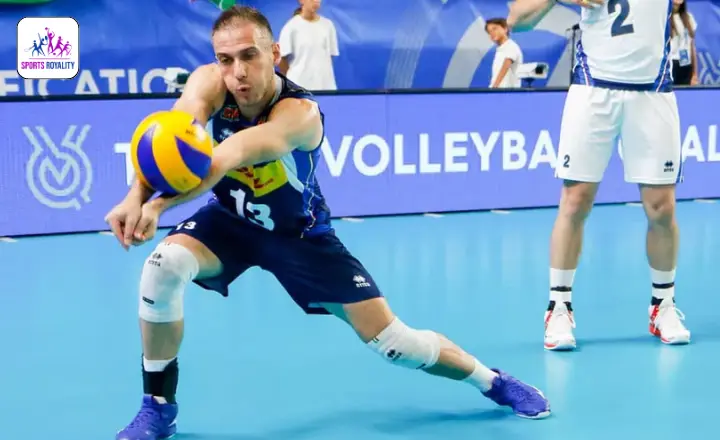
Final Words For Volleyball Libero Tips
These 10 expert volleyball libero tips offer valuable insights and strategies to help improve your performance on the court. From positioning and communication to reading the game and mastering defensive skills, incorporating these tips into your training regimen can significantly improve your ability to excel as a libero.
Remember to practice and refine these techniques constantly; consistency is key to becoming a successful libero. Take these volleyball libero tips to heart, implement them in your next game or practice session, and watch as you elevate your game to new heights. Good luck on your journey to becoming an exceptional libero.
FAQs
Can a Libero sub for Anyone?
No, a libero in volleyball can only sub for the back-row players. The libero is a specialized defensive player restricted to replacing back-row players.
Can you have 2 Liberos in Volleyball?
No, according to the official volleyball rules, a team can only have one libero on the court at a time.

